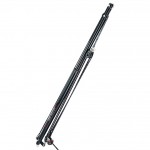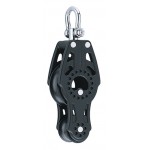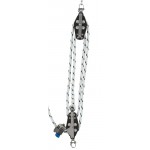What is a boom vang?
On a sailboat, a boom vang is a crucial piece of equipment that exerts downward force on the boom. The boom vang connects to the base of the mast and extends diagonally from the base of the mast and connects to the boom.
What type of blocks do you use to set up a boom vang?
The simplest 4:1 boom bangs us a fiddle with a cam & becket at the base of the mast and a fiddle block attached to the boom. Please see out Harken Vang Set Up guide for more information
What is a boom vang used for?
Controls Sail Shape: The primary function of a boom vang is to control the shape of the mainsail. By pulling the boom down, it reduces the amount of "twist" in the sail. This flattening of the sail is essential for optimal performance in stronger winds.
Prevents Boom Rise: When sailing downwind, the force of the wind can push the boom upwards. The boom vang counteracts this force, preventing the boom from rising and potentially damaging the mast or rigging.
Improves Performance: By controlling sail shape and preventing boom rise, the boom vang helps to improve the boat's speed, stability, and overall performance.
Types of Boom Vangs:
Mechanical Vangs: These use a system of pulleys and lines to apply downward force on the boom. Check out our Harken Boom Vang Setup guide to make your own!
Hydraulic Vangs: These utilize hydraulic cylinders to provide smooth and powerful control over the boom.
Rigid Vangs: These are solid rods that connect the boom to the mast, providing a more direct and powerful downward force.
In essence, the boom vang is a critical tool for fine-tuning the mainsail and optimizing the boat's performance in various wind conditions.





